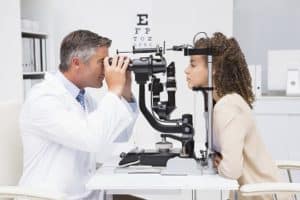Patients Need More Than Luck to Save Their Vision
Posted by amess on Mar 15th 2018
Top o' the morning to you! March is an important month for eye health observances, as the American Optometric Association also recognizes it as Save Your Vision Month. While St. Patrick’s Day is just around the corner, the luck of the Irish isn’t enough to guarantee patients’ eyes are protected for long-term health. Share this simple checklist to help patients know how they can best protect their sight.
Vision-Saving Habits
Regular Eye Exams
Standard exams are very important to saving vision. They give eye care professionals the opportunity to adjust any prescriptions, so vision stays crisp and clear. They can also help catch any issues or concerns early before they can affect patients’ sight.
Prepare and Protect the Eyes
The sun is a potent light source, and both its visible and invisible wavelengths of light can damage the eyes. Encourage patients to wear the proper protection when spending extended time outdoors. Sunglasses and hats are great ways to keep the eyes shaded from the powerful light waves. Safety glasses should also be worn when completing tasks that may risk debris entering the eyes. Learn more about proper protection by reading Nutrition & Apparel: A United Front in Protecting Eye Health.
Set Up Computer Stations to Reduced Digital Eye Strain
Patients should learn how to set up their workplaces to mitigate the effects of digital eye strain. Things like reducing glare, having good lighting, and the 20-20-20 rule are great starts to creating an environment conducive to eye wellness. For more tips, read 5 Ways to Reduce Digital Eye Strain in the Workplace.
Vision-Saving Nutrition
 It’s no secret that nutrition is important for overall health. Proper nutrition gives the body what it needs to function at its best. The eyes are no different, and patients should be getting certain specific nutrients to help their support their eye health throughout the years.
We talked
last week about nutrients that can specifically impact eye health in a positive way. A few more ingredients that are beneficial to eyes are:
It’s no secret that nutrition is important for overall health. Proper nutrition gives the body what it needs to function at its best. The eyes are no different, and patients should be getting certain specific nutrients to help their support their eye health throughout the years.
We talked
last week about nutrients that can specifically impact eye health in a positive way. A few more ingredients that are beneficial to eyes are:
- CoQ10 – A powerful mitochondrial antioxidant; defective mitochondria are the first implication of eye health concerns.
- B Vitamins (B6, Folate, B12) – They help reduce homocysteine levels in the blood. B-vitamin deficiencies and higher homocysteine levels have been linked to increased risk of age-related eye health issues.
- Alpha Lipoic Acid – Another mitochondrial antioxidant that also helps reduce iron. Iron overload has been implicated in the development and worsening of many eye health concerns.
Many practitioners suggest eye health nutraceuticals to ensure patients are getting the nutrition needed for optimal eye health. Eye care professionals have the responsibility to help their patients continue to see their best throughout the ages. With this list, your patients can thank their lucky stars because they’ll know they’re doing everything they can to protect their eyes. Photo on Visualhunt.com


